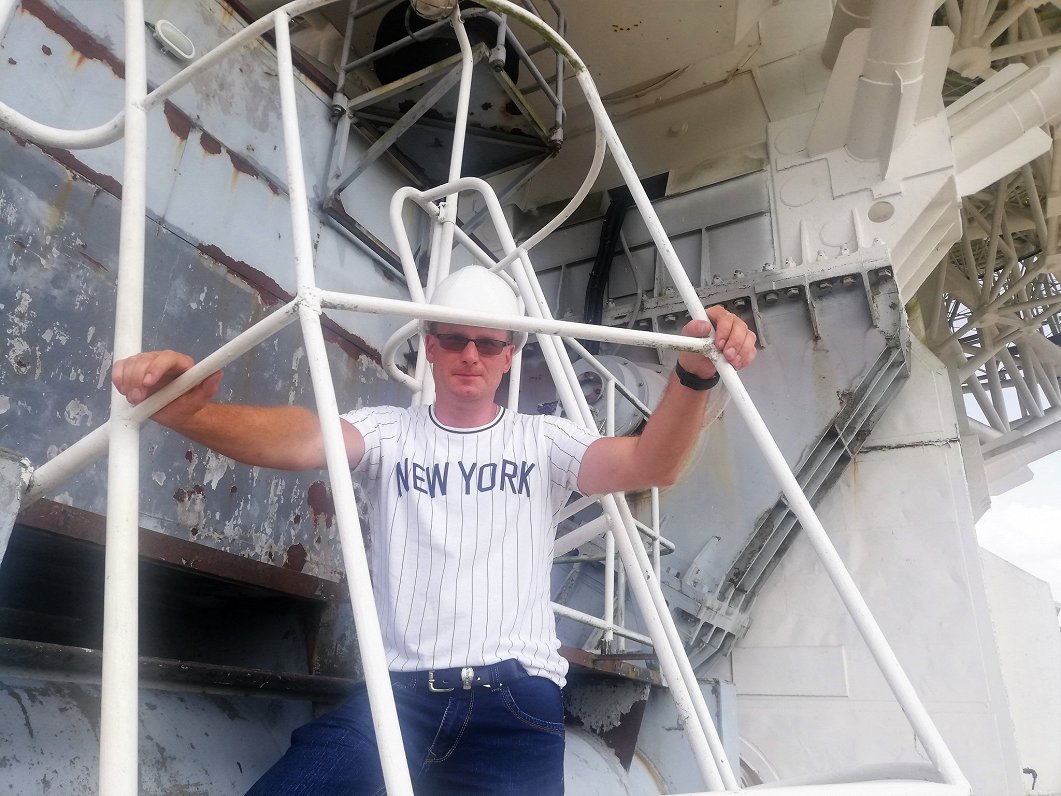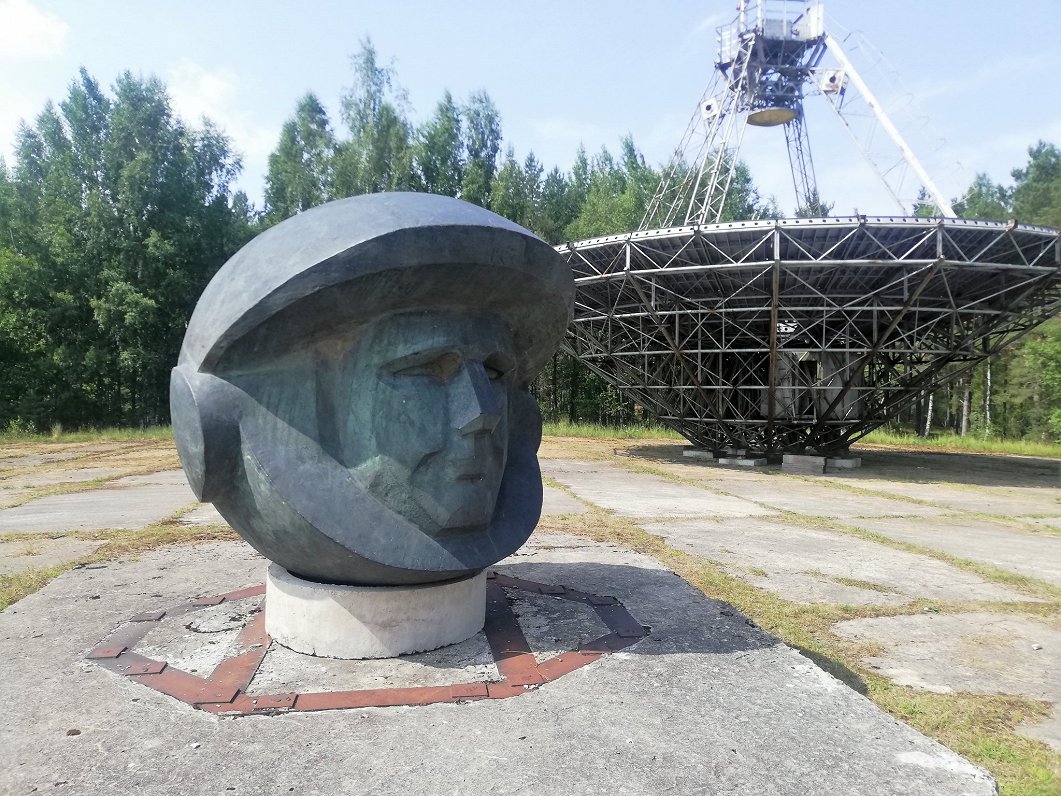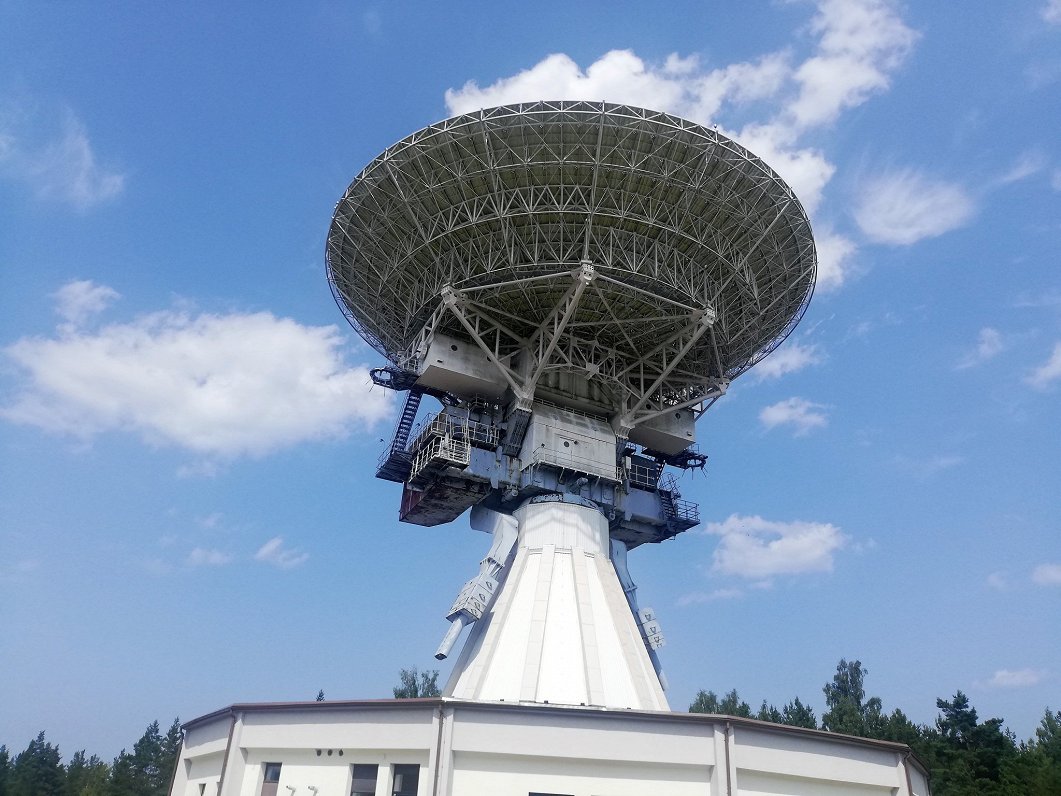From Riga’s “Stalin’s birthday cake” skyscraper to nuclear missile silos, Latvia is dotted with surreal reminders of the Soviet period. But few are as eye-popping as the Irbene radio telescope on the west coast.
Turn off the road between Kolka and Ventspils, and suddenly the thick green forests of Slītere National Park give way to what looks like a Bond villain’s lair. Amidst a prairie of cracked concrete, a giant dish arches toward the sky, gathering more information than even the most fevered imagination could ponder.
The 32-meter-diameter telescope and its surrounding top secret military town were originally constructed by the Soviet regime in the 1960s to eavesdrop on NATO communications. Today, a dedicated team of researchers use this Cold War relic to look into the remotest corners of the universe. And possibly at the future of human civilization.
Heavens above
Vladislavs Bezrukovs’ life has straddled these two worlds. In the 1990s, he spent summers around the radar, where his father was one of a team trying to save the site from a plague of post-communist looting. What the departing military forces hadn’t carted away had been ruthlessly scavenged by precious metal thieves, and Latvian engineers spent four years getting the telescope (too bulky for even the most determined criminal) running again.
Studying computing at Riga Technical University, Vladislavs developed a control system for the scope for his master’s thesis. And he decided to stick around.

“The work was interesting, and I’d always enjoyed physics and been good at it, so I decided to make a career in radio astronomy,” says Vladislavs.
Today, he is a lecturer at Ventspils University of Applied Sciences, which operates the Ventspils International Radio Astronomy Center. In addition to the big dish, the facility also includes a smaller, 16-meter Soviet-vintage radio telescope, as well as a recently-installed LOFAR (low frequency array) field of sensors, which to the uninitiated looks like a paddock filled with black boxes.
According to Vladislavs, this trio can be used on its own for national-level projects. But when they are hooked up with dozens of other telescopes around Europe, a whole new realm opens up. By pointing all these pairs of eyes at the same beam at the same time (requiring synchronization down to fractions of a nanosecond), scientists can observe celestial objects billions of light years away.
“We combine numerous telescopes in a network and work as one big telescope,“ says Vladislavs.
The star watchers are particularly interested in super massive black holes. These colossal entities (hyperbole doesn’t begin to do them justice) absorb all the matter surrounding them, but instead of sucking it down into a vortex, they send it streaming out in jets the size of galaxies at the speed of light.
Thanks to a grant from the Latvian Council of Science, Irbene has teamed up with radio telescopes in Ukraine and Slovakia as well as the optical telescope at Baldone, south of Riga, to examine the black holes of the Perseus Constellation. The researchers want to understand why they are constantly changing their form. Vladislavs’ explanation of this deserves quoting in full, because if it wasn’t being parlayed by this passionate expert with a formidable intellect, it might sound like science fiction.
“The kinds of energies we are observing there cannot be repeated here on Earth,” he says. “Even in particle accelerators, we don’t even come close to those super massive black holes. By understanding what is going on, we can glimpse the next stage of humanity’s energy usage. We are only just beginning to explore fusion energy, which doesn’t even come close to that. But in the next level of civilization, we will be able to use black holes. Not on Earth, but in 500 or a thousand years when humans travel in space, one of our energy sources will be black holes.”
Old comrades
The vast amount of information gleaned from the telescopes which is then shared with partners abroad makes Irbene Latvia’s single largest exporter of internet data. And so it is equipped with a supercomputer that puts your average laptop in the pen-and-paper power league.
It’s also a contrast with a Soviet-era control panel Bezrukovs Senior and friends fetched out of a local swamp, a chunk of battered brown plastic parked in the lobby of the main telescope building. It is far from the only reminder of the Evil Empire scattered around the place.

The township, which complete with a library and a kindergarten once housed 1,000 people, is an empty shell, but there’s still a striking Soviet star on the main gate. A small museum in one of the outbuildings has a predictable array of Lenin portraits, while outside there’s a bust of pioneering cosmonaut Yuri Gagarin. Visitors can take a guided tour of a tunnel running for several hundred metres between the big and small telescopes.
Irbene is one of the stops on the 10,000 kilometre Iron Curtain Trail of Cold War-vintage sites stretching from Finland to Bulgaria. And though foreign visitors are a rare sight in Latvia this year, gaggles of curious locals wander about the site.
Vladislavs and most of his colleagues actually do most of their work remotely from Ventspils. But as long as they can keep attracting support from international projects and EU funds, they will keep this bizarre site with cosmic ambitions humming along. You can learn more about their projects at the center’s website.





























